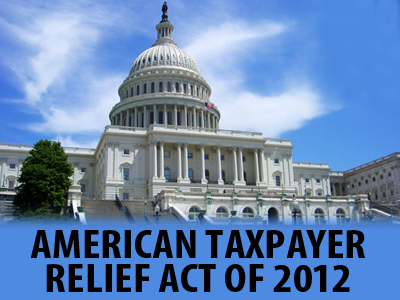
American Taxpayer Relief Act of 2012
USINFO | 2013-11-01 13:03

Construction and Real Estate Tax Changes as of Jan. 2, 2013
The American Taxpayer Relief Act of 2012 (the Act), passed January 2, 2013, includes a number of construction and real estate related provisions important to the affordable housing, economic development, and renewable energy industries. We have highlighted some of the key construction and real estate tax extensions below.
New Markets Tax Credit
The Act renews the New Markets Tax Credit (NMTC), which supports business financing and development of commercial real estate and community facilities in highly distressed areas across the nation, through 2013. The Community Development Financial Institutions (CDFI) Fund, a division of the US Treasury Department, oversees the program. An annual allocation authority has been set at $3.5 billion per year for 2012 (to be awarded in 2013) and 2013 (to be awarded in 2014).
The NMTC program was enacted in 2000 to encourage private investments in low-income areas throughout the nation. The CDFI Fund allocates NMTC through Community Development Entities, which in turn provide subsidized financing to impactful projects that are located in qualifying census tracts. The program funds a wide range of opportunities—urban and rural, small to large transactions, and a variety of business, community, and commercial real estate projects. Since 2000, these investments have totaled $30.8 billion through January 3, 2013. Please contact a Baker Tilly advisor to learn more about which projects and locations qualify for the benefit provided by NMTC.
Energy Efficient Home Credit (45L)
Multi-family developers take note—the 45L Energy Efficient Home Credit was extended for another two years, benefitting residential rental units leased through December 31, 2013. The credit is a $2,000 per unit federal tax credit for energy-efficient qualifying units leased by 2013. To qualify, units must meet certain defined energy efficiency standards, which were also updated as part of this legislation.
This credit had previously expired for qualifying units leased by December 31, 2011. The credit can be a significant additional benefit for work you may already be doing to your new construction multi-family project or substantial rehab project. Baker Tilly worked with developers who obtained almost $200,000 in federal tax credits for one project. Additionally, our advisors have worked with direct investors in Low-Income Housing Tax Credits (LIHTC) who also invested in the 45L credit, providing additional sources of funds for the LIHTC project.
If you are working on a new construction or substantial rehab multi-family project or have developed one in the past three or four years, your project may be a candidate to receive these credits (you can amend prior year tax returns to claim the credit). Submit a project using our qualification form to find out!
9% Low-Income Housing Tax Credit floor extended
The Act fixes the 9% rate at 9% for projects receiving an allocation of Low-Income Housing Tax Credits prior to January 1, 2014.
Business tax provisions
Bonus depreciation and other tax incentives were enacted in 2009 intended to provide a short-term stimulus to the economy. Of these provisions, the following have been extended by the Act:
•50% bonus depreciation has been extended through 2013 (2014 for long production property)
•15-year straight-line cost recovery for qualified leasehold improvements, restaurant buildings and improvements, and retail improvements has been retroactively extended through 2013
•The increased section 179 expensing amount of $500,000 is extended through 2013 and reverts to $25,000 beginning in 2014. The investment-based phase-out is increased to $2 million through 2013.
Empowerment zone tax breaks reinstated and extended
The designation of an economically depressed census tract as an "empowerment zone" renders businesses and individual residents within such a zone eligible for special tax incentives. Under pre-Act law, empowerment zone designations expired on Dec. 31, 2011. The Act extends for two years, through Dec. 31, 2013, the period for which the designation of an empowerment zone is in effect.
Empowerment zone tax incentives include: a 20% wage credit under §1396; liberalized §179 expensing rules ($35,000 extra expensing and the break allowing only 50% of expensing-eligible property to be counted for purposes of the investment-based phase-out of expensing); tax-exempt bond financing under §1394; and deferral under §1397B of capital gains tax on sale of qualified assets sold and replaced.
For a designation of an empowerment zone, the nomination for which included a termination date which is Dec. 31, 2011, termination shall not apply with respect to that designation if the entity which made such nomination amends the nomination to provide for a new termination date in such manner as the IRS may provide. The Act also extends for two years, through Dec. 31, 2018, the period for which a higher percentage exclusion applies for certain qualified small business stock of empowerment zone businesses.
Share this page



















